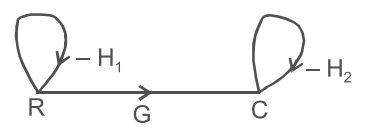Control systems miscellaneous
- For a gain constant K, the phase-lead compensator—
-
View Hint View Answer Discuss in Forum
For a constant gain, the phase lead compensator reduces the slope of the magnitude curve in the entire range of frequency domain. For more detail refer synopsis.
Correct Option: A
For a constant gain, the phase lead compensator reduces the slope of the magnitude curve in the entire range of frequency domain. For more detail refer synopsis.
- Consider the following statements regarding time-domain analysis of a control system
1. Derivative control improves system’s transient performance
2. Integral control does not improve system’s steady state performance
3. Integral control can convert a second order system into a third order system. Of these statements—
-
View Hint View Answer Discuss in Forum
For more detail refer synopsis of integral and derivative control action.
Correct Option: B
For more detail refer synopsis of integral and derivative control action.
- In a linear system, an input of 5 sin ωt produces an output of 10 cos ωt. The output corresponding to input 10 cos ωt will be equal to—
-
View Hint View Answer Discuss in Forum
Given
it means the system is differentiator with ω = 2
So with,
ω = 2
= – 10. ω sin ωt
= – 10 × 2. sin ωt
= – 20 sin ωt,Correct Option: D
Given
it means the system is differentiator with ω = 2
So with,
ω = 2
= – 10. ω sin ωt
= – 10 × 2. sin ωt
= – 20 sin ωt,
- A linear second-order system with the transfer function
G(s) = 49 s2 + 8s + 49
is initially at rest and is subject to a step input signal. The response of the system will exhibit a peak overshoot of—
-
View Hint View Answer Discuss in Forum
We know that maximum overshoot is given as
Mp = e– ξπ/√1 – ξ2From given T.F. = G 49 s2 + 8s + 49
C.E. = s2 + 8s + 49
on comparing this equation with the standard equation
ωns + ω2n = 0
2 ξωn and ωn = 7
orξ = 8 = 8 = .57 2ωn 2 × 7 % Mp = e -3.14 × (0.57)2 × 100 = 2% √1 - (0.57)2 Correct Option: C
We know that maximum overshoot is given as
Mp = e– ξπ/√1 – ξ2From given T.F. = G 49 s2 + 8s + 49
C.E. = s2 + 8s + 49
on comparing this equation with the standard equation
ωns + ω2n = 0
2 ξωn and ωn = 7
orξ = 8 = 8 = .57 2ωn 2 × 7 % Mp = e -3.14 × (0.57)2 × 100 = 2% √1 - (0.57)2
- NA

-
View Hint View Answer Discuss in Forum
From figure
C = GR – CH2
C (1 + H2) = GR
From figureC = G R 1 + H2
C = GR – CH2
C (1 + H2) = GRC = G R 1 + H2 
Correct Option: B
From figure
C = GR – CH2
C (1 + H2) = GRC = G R 1 + H2 

